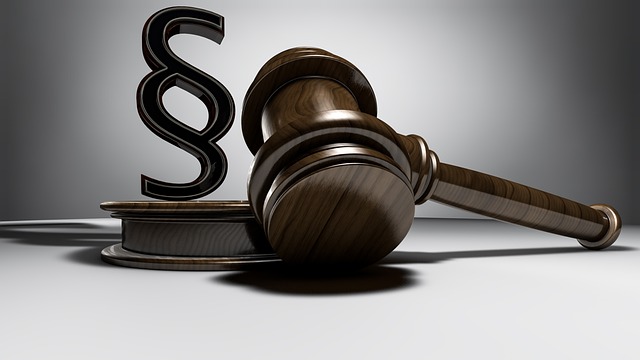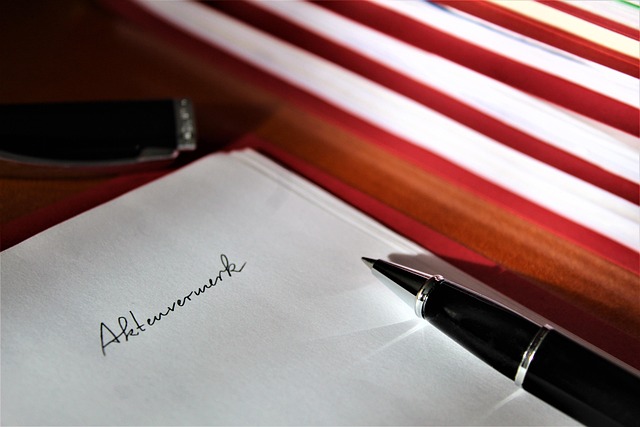Mail wire fraud schemes impersonate legitimate entities, using urgent language to trick individuals and businesses into unauthorized financial transfers. To protect against these scams, clients must recognize red flags like unexpected payment demands or threats, verify communications directly, and stay informed about environmental regulations litigation—a frequent pretext. Navigating this involves strategic legal approaches, corporate compliance programs, secure communication channels, and awareness to minimize risks and achieve positive outcomes in environmental cases.
Mail wire fraud, a sophisticated scheme targeting businesses and individuals, has become increasingly prevalent. This article guides you through the intricate world of environmental regulations litigation, offering insights into how to identify and navigate these fraudulent practices. We explore common mail wire fraud schemes, key players in regulatory environments, and red flags in correspondence. Additionally, we provide legal strategies for successful litigation and preventive measures to secure your communication, empowering you to protect against these insidious threats.
- Understanding Mail Wire Fraud Schemes
- Environmental Regulations: Key Players
- Identifying Red Flags in Correspondence
- Legal Strategies for Litigation Success
- Preventive Measures: Securing Your Communication
Understanding Mail Wire Fraud Schemes
Mail wire fraud schemes have become increasingly sophisticated, leveraging digital technologies to dupe individuals and businesses into making unauthorized financial transfers. These scams often impersonate legitimate organizations or government agencies, using urgent language and threatening tactics to pressure victims into quick decisions. For his clients across the country, navigating these fraudulent attempts can be challenging. Understanding common mail wire fraud schemes is crucial for recognizing and avoiding potential pitfalls.
By familiarizing themselves with how these scams work, individuals and businesses can protect their financial security. This includes being wary of unexpected emails or letters demanding immediate payment or threatening legal action. It’s essential to verify the authenticity of such communications by contacting the organization directly using official contact information. Additionally, staying informed about environmental regulations litigation, which is often a pretext used in these schemes, can help individuals and organizations across different sectors remain vigilant against potential fraud attempts targeting their philanthropy or political activities.
Environmental Regulations: Key Players
Navigating environmental regulations can be a complex task, especially when it comes to litigation involving various stakeholders. Key players in this arena include government agencies, regulatory bodies, and legal professionals who specialize in environmental law. These entities work together to ensure compliance with laws designed to protect our planet. For corporate and individual clients alike, understanding these regulations is crucial for avoiding legal pitfalls and potential fines.
When it comes to litigation, the involvement of philanthropic and political communities can also shape environmental policies. Their advocacy plays a significant role in driving change and influencing legislation. As these regulations evolve, businesses must adapt their practices while considering the respective business impacts on all stakeholders involved. How companies navigate this landscape is essential for sustainable growth and minimizing legal risks.
Identifying Red Flags in Correspondence
When it comes to mail wire frauds, learning to identify red flags in correspondence is a vital step in navigating potential environmental regulations litigation. Scrutinize any communications for signs of deception or urgency. Demanding language, requests for immediate action, and threats of legal repercussions are common tactics used by scammers to manipulate recipients. Be wary of unexpected emails or calls claiming to represent government agencies or reputable organizations, especially if they request sensitive information over email or telephone.
Additionally, look out for inconsistencies in sender details, such as an unusual email domain or a phone number that doesn’t match the organization’s official records. Legitimate entities usually provide comprehensive contact information and use secure communication channels. Remember, white collar defense attorneys advise their clients to maintain detailed records of all communications related to potential frauds. By staying alert and documenting suspicious interactions, individuals can better protect themselves from falling victim to mail wire scams and prepare for any subsequent legal proceedings involving environmental regulations.
Legal Strategies for Litigation Success
Navigating Environmental Regulations Litigation requires a strategic approach, especially when facing mail wire fraud charges. Understanding how to interpret and comply with environmental laws is key to defending against such claims. Legal professionals must be adept at analyzing complex regulations and demonstrating adherence to them. This involves scrutinizing every detail of an organization’s operations, ensuring all processes align with legal standards.
Successful litigation in this domain often hinges on presenting a compelling defense that showcases the client’s commitment to environmental stewardship. The strategy may include employing expert witnesses who can explain regulatory nuances, analyzing similar case precedents, and showcasing the company’s efforts towards philanthropy and political community engagement as evidence of good faith. Additionally, white-collar defense tactics, such as emphasizing corporate compliance programs and internal investigations, can be instrumental in achieving a positive outcome, whether through settlement or jury trials.
Preventive Measures: Securing Your Communication
Securing your communication is a vital step in preventing mail wire fraud. It’s essential to understand that many cases of fraudulent activities begin with compromised data, so fortifying your digital defenses is crucial. Start by using robust passwords and enabling two-factor authentication on all accounts. This adds an extra layer of protection, making it significantly harder for scammers to access sensitive information. Additionally, regularly update software and security patches to close any potential vulnerabilities in your system.
Furthermore, be cautious when sharing personal details online or over the phone. Verify the legitimacy of requests for private information, especially from unknown sources. A general criminal defense strategy includes being aware of every step in the investigative process—from initial surveillance to enforcement actions—and ensuring that all communications are secure. Avoiding indictment starts with preventing unauthorized access and maintaining stringent data security measures throughout all stages of the investigative and enforcement process.
Mail wire frauds are a significant concern, but understanding and implementing preventive measures can go a long way in ensuring secure communication. By identifying red flags, staying informed about environmental regulations, and employing legal strategies, individuals and organizations can successfully navigate the complexities of litigation. Adopting robust security practices is crucial to protect against these schemes, ultimately fostering a safer digital environment for all. For those involved in environmental regulations litigation, understanding these steps is essential to achieving success and safeguarding their interests.






